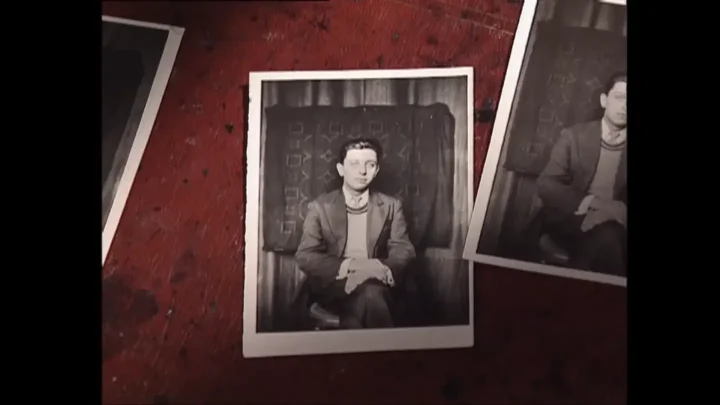Robert Desnos remains one of the most enigmatic and imaginative figures of 20th-century French literature. From his mystical childhood memories to his resistance during World War II, Desnos’s life was one of artistic innovation, emotional intensity, and unwavering commitment to personal freedom.
Table of Contents
- 1. Early Life and Mythical Memories
- 2. Awakening Through Art and Adolescence
- 3. Post-War Disillusionment and a New Poetic Vision
- 4. Immersed in Books and the Literary Scene
- 5. Embracing Surrealism and the Unconscious
- 6. A Vivid Creative Period
- 7. Journalism, Cinema, and Everyday Magic
- 8. Music, Radio, and Popular Culture
- 9. Politics, Art, and the Surrealist Split
- 10. Struggles and Literary Resistance
- 11. War, Courage, and Final Sacrifice
- 12. Summary: Robert Desnos at a Glance
Early Life and Mythical Memories
Desnos’s childhood memories were more symbolic than factual—almost dreamlike. These tales, likely reconstructed through family stories, became the seeds of a deeply personal mythology.
“He remembered a fiacre plunging into an abyss and a buried car in Paris, awaiting its discovery by future archaeologists.”
Rather than traditional education, it was this myth-making imagination that shaped his early worldview and creativity.
Awakening Through Art and Adolescence
The outbreak of World War I marked Desnos’s teenage years. His home life was emotionally distant, with a passive mother and a father who had become a minor public figure. By age 16, he was already writing dreams and poems, diverging from societal expectations.
🟩 Note: Desnos often chose freedom and creativity over stability, even as he juggled odd jobs during financially precarious years.
“He considered these years to be the most truly free in his life—despite their instability.”
Post-War Disillusionment and a New Poetic Vision
After the armistice in 1918, Desnos and many of his peers were disillusioned. The war had ended, but society seemed unchanged.
“They viewed nationalist literature as out of touch and shallow.”
This frustration became a creative drive. Desnos saw poetry as the path to renewal, seeking to redefine literature for a generation marked by trauma.
Immersed in Books and the Literary Scene
By 1919, Desnos had entered the literary world. Working at a small publishing house and gaining access to the National Library, he immersed himself in literature.
🟩 Highlight: His reading ranged from Victor Hugo and Rimbaud to popular serials and early silent films—blending high art and mass culture.
“Friendships with artists like Soupault and Prévert shaped his thinking and introduced him to literary circles.”
Embracing Surrealism and the Unconscious
In 1922, Desnos discovered Surrealism, aligning with figures like André Breton and Philippe Soupault. He was particularly drawn to automatic writing, which aimed to bypass conscious thought and unlock the unconscious.
“Desnos’s writing pushed boundaries, rejecting logic and conventional morality in favor of liberated imagination.”
He soon became a major voice within the Surrealist movement, known for his experiments with hypnotic states and dream recording.
A Vivid Creative Period
Works like the Langage Cuit series (1923) showcased his embrace of altered states and surreal wordplay. His talent amazed peers—some even worried about the psychological toll.
🟩 Example: Desnos could enter trances and write complex poetry, creating imagery that was both absurd and profound.
“His writings from this era were wildly creative, sometimes blurring the line between genius and madness.”
Journalism, Cinema, and Everyday Magic
In 1923, Desnos began working as a film critic. He viewed early cinema as a kind of visual poetry.
“He praised filmmakers like Feuillade and German Expressionists but criticized others like Abel Gance.”
🟩 Did You Know?
Desnos collaborated with Man Ray, inspiring the famous starfish motif in his art.
He also wrote unproduced screenplays and championed cinema’s ability to bring dreams to life.
Music, Radio, and Popular Culture
Between 1925 and 1930, Desnos expanded into music and radio. He wrote:
- Songs for Fréhel
- Children’s lyrics for Darius Milhaud
- Scripts for surreal radio shows
One standout was “La Clef des Songes”, a radio show where he interpreted listeners’ dreams—merging his surrealist past with mass media.
Politics, Art, and the Surrealist Split
Desnos’s journey to Cuba in 1928 broadened his perspective. Back in Paris, his bohemian lifestyle brought him close to artists like Foujita and Federico García Lorca.
However, ideological differences led to tension within the Surrealist circle.
“His refusal to join the Communist Party and criticism of Breton’s leadership led to his exclusion from the movement in 1929.”
Struggles and Literary Resistance
After his break with Surrealism, Desnos faced economic hardship. He took a job as a building manager to support his creative work. His passionate but often one-sided love life, especially with Yvonne George, inspired deeply personal poetry like Corps et Biens.
Even during hard times, he continued to publish poems—some circulated clandestinely.
War, Courage, and Final Sacrifice
With the onset of World War II, Desnos shifted from pacifist to active resistor. While working at a collaborationist newspaper, he covertly embedded anti-Nazi messages.
“He was arrested in March 1944 and deported to Auschwitz, then to Buchenwald, Flossenbürg, and finally Terezín.”
Despite the horrors, Desnos continued to inspire others, offering hope in concentration camps.
🟥 His Final Moment
Desnos died of typhus on June 12, 1945, shortly after liberation. His last whispered words described a dream of a loved one—his imagination enduring until the end.
Summary: Robert Desnos at a Glance
- Born: 1900, Paris
- Surrealist poet, journalist, dreamer, and radio innovator
- Key themes: Freedom, dreams, love, resistance
- Major works: Corps et Biens, Langage Cuit, radio shows
- Died: 1945, Terezin concentration camp
- Legacy: A fearless voice of creativity and courage
